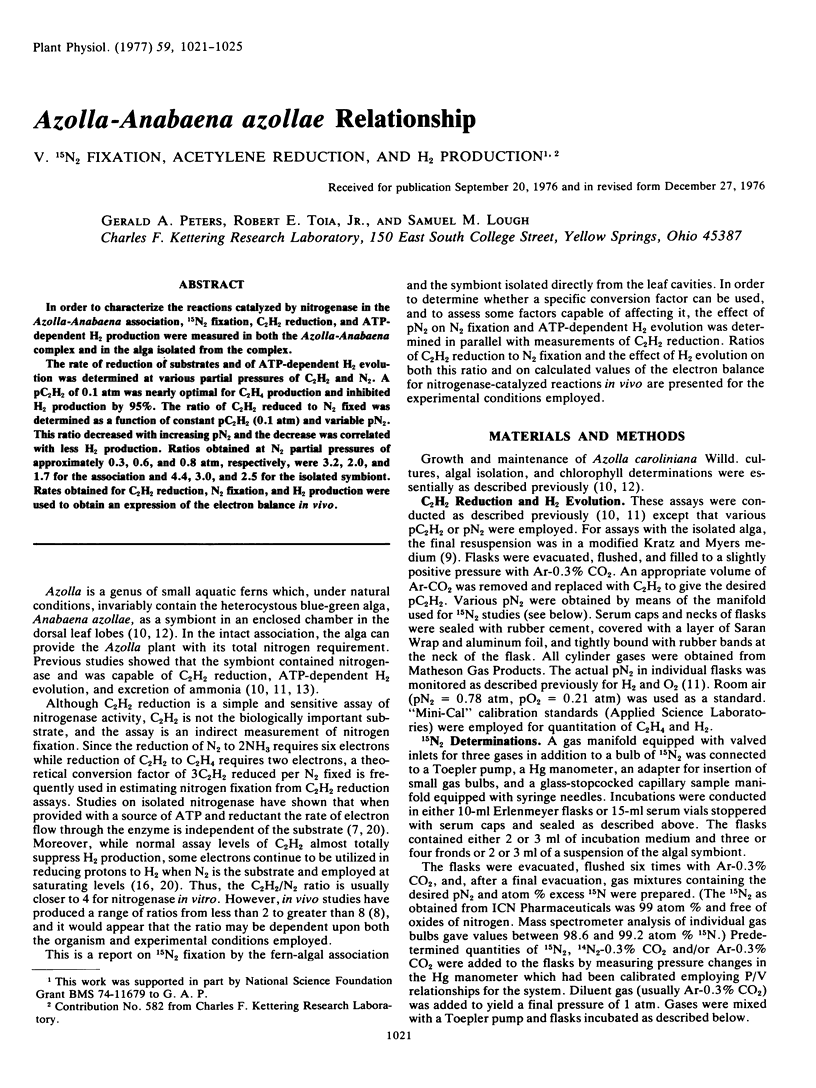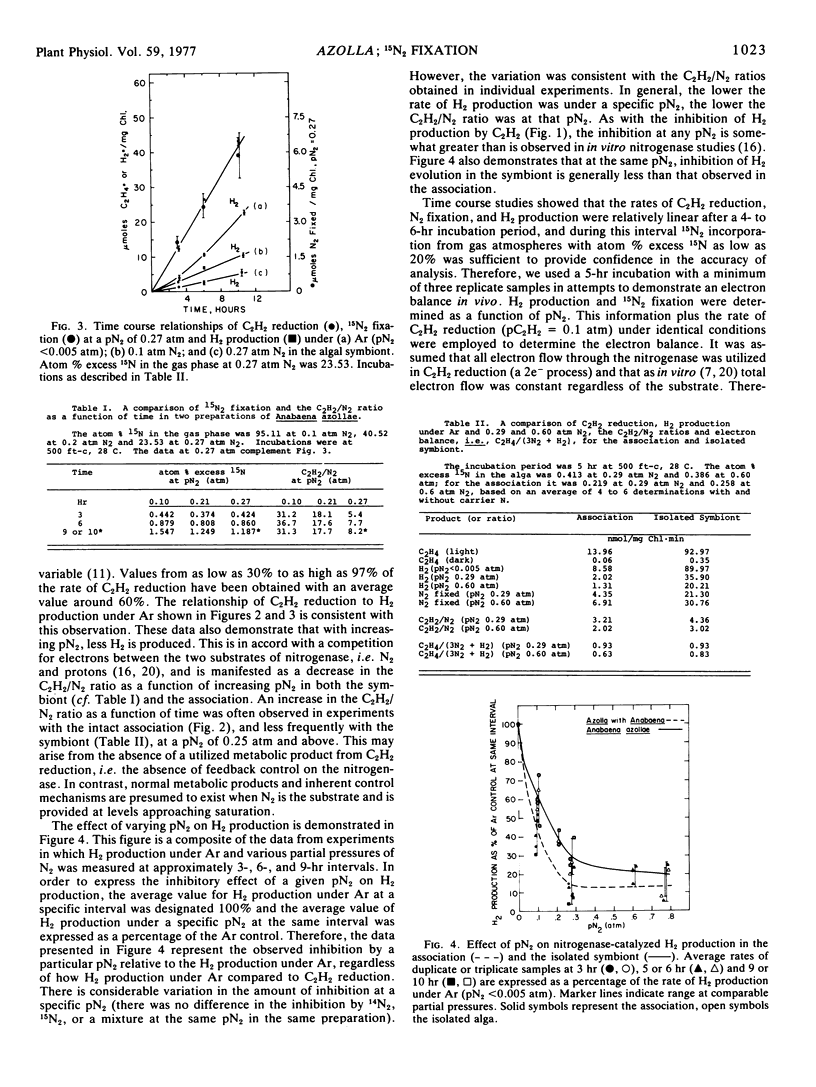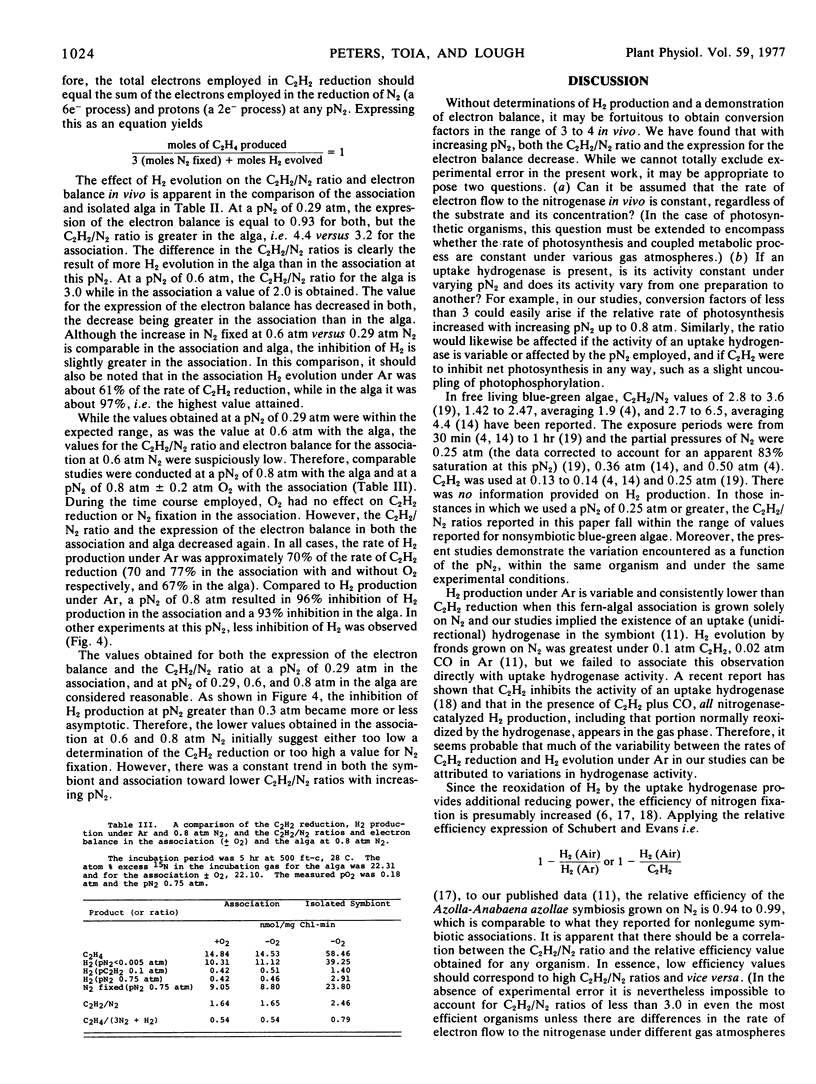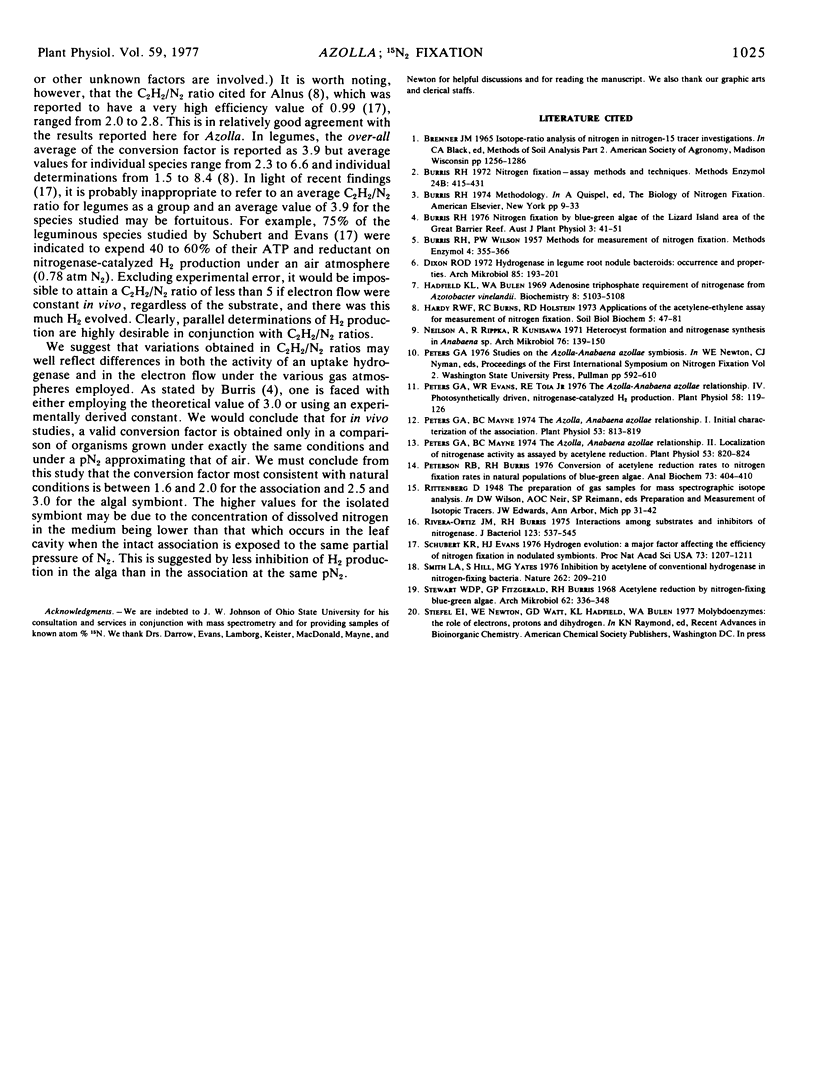Abstract
In order to characterize the reactions catalyzed by nitrogenase in the Azolla-Anabaena association, 15N2 fixation, C2H2 reduction, and ATP-dependent H2 production were measured in both the Azolla-Anabaena complex and in the alga isolated from the complex.
The rate of reduction of substrates and of ATP-dependent H2 evolution was determined at various partial pressures of C2H2 and N2. A pC2H2 of 0.1 atm was nearly optimal for C2H4 production and inhibited H2 production by 95%. The ratio of C2H2 reduced to N2 fixed was determined as a function of constant pC2H2 (0.1 atm) and variable pN2. This ratio decreased with increasing pN2 and the decrease was correlated with less H2 production. Ratios obtained at N2 partial pressures of approximately 0.3, 0.6, and 0.8 atm, respectively, were 3.2, 2.0, and 1.7 for the association and 4.4, 3.0, and 2.5 for the isolated symbiont. Rates obtained for C2H2 reduction, N2 fixation, and H2 production were used to obtain an expression of the electron balance in vivo.
Full text
PDF




Selected References
These references are in PubMed. This may not be the complete list of references from this article.
- Burris R. H. Nitrogen fixation--assay methods and techniques. Methods Enzymol. 1972;24:415–431. doi: 10.1016/0076-6879(72)24088-5. [DOI] [PubMed] [Google Scholar]
- Dixon R. O. Hydrogenase in legume root nodule bacteroids: occurrence and properties. Arch Mikrobiol. 1972;85(3):193–201. doi: 10.1007/BF00408844. [DOI] [PubMed] [Google Scholar]
- Hadfield K. L., Bulen W. A. Adenosine triphosphate requirement of nitrogenase from Azotobacter vinelandii. Biochemistry. 1969 Dec;8(12):5103–5108. doi: 10.1021/bi00840a064. [DOI] [PubMed] [Google Scholar]
- Neilson A., Rippka R., Kunisawa R. Heterocyst formation and nitrogenase synthesis in Anabaena sp. A kinetic study. Arch Mikrobiol. 1971;76(2):139–150. doi: 10.1007/BF00411788. [DOI] [PubMed] [Google Scholar]
- Peters G. A., Evans W. R., Toia R. E. Azolla-Anabaena azollae Relationship: IV. Photosynthetically Driven, Nitrogenase-catalyzed H(2) Production. Plant Physiol. 1976 Aug;58(2):119–126. doi: 10.1104/pp.58.2.119. [DOI] [PMC free article] [PubMed] [Google Scholar]
- Peters G. A., Mayne B. C. The Azolla, Anabaena azollae Relationship: I. Initial Characterization of the Association. Plant Physiol. 1974 Jun;53(6):813–819. doi: 10.1104/pp.53.6.813. [DOI] [PMC free article] [PubMed] [Google Scholar]
- Peters G. A., Mayne B. C. The Azolla, Anabaena azollae Relationship: II. Localization of Nitrogenase Activity as Assayed by Acetylene Reduction. Plant Physiol. 1974 Jun;53(6):820–824. doi: 10.1104/pp.53.6.820. [DOI] [PMC free article] [PubMed] [Google Scholar]
- Peterson R. B., Burris R. H. Conversion of acetylene reduction rates to nitrogen fixation rates in natural populations of blue-green algae. Anal Biochem. 1976 Jun;73(2):404–410. doi: 10.1016/0003-2697(76)90187-1. [DOI] [PubMed] [Google Scholar]
- Rivera-Ortiz J. M., Burris R. H. Interactions among substrates and inhibitors of nitrogenase. J Bacteriol. 1975 Aug;123(2):537–545. doi: 10.1128/jb.123.2.537-545.1975. [DOI] [PMC free article] [PubMed] [Google Scholar]
- Schubert K. R., Evans H. J. Hydrogen evolution: A major factor affecting the efficiency of nitrogen fixation in nodulated symbionts. Proc Natl Acad Sci U S A. 1976 Apr;73(4):1207–1211. doi: 10.1073/pnas.73.4.1207. [DOI] [PMC free article] [PubMed] [Google Scholar]
- Smith L. A., Hill S., Yates M. G. Inhibition by acetylene of conventional hydrogenase in nitrogen-fixing bacteria. Nature. 1976 Jul 15;262(5565):209–210. doi: 10.1038/262209a0. [DOI] [PubMed] [Google Scholar]
- Stewart W. D., Fitzgerald G. P., Burris R. H. Acetylene reduction by nitrogen-fixing blue-green algae. Arch Mikrobiol. 1968;62(4):336–348. doi: 10.1007/BF00425639. [DOI] [PubMed] [Google Scholar]


